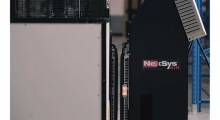Founded in 1919, Cummins is a global power leader that designs, manufactures, sells and services diesel engines and related technology around the world. Through its network of 107 manufacturing plants, 600 company-owned and independent distributor facilities, and more than 5,000 dealer locations, the company spans into more than 160 countries and territories. In 2014, the company pursued a standardized global ergonomic assessment methodology.
The company now uses a software-as-a-service (SaaS) application (Humantech) for managing workplace ergonomics in production, assembly, distribution and service environments at many of its plants. According to corporate ergonomics specialist Chris Shieldsmith, the new system helped the company transition from using lagging indicators to leading ones.
“Looking in the rear-view mirror to develop business processes and improvements is reactive,” Shieldsmith says. “Lost work days and injury data are important to know, but they shouldn’t be the decision-making factors.”
Instead, the company began predicting which events could occur and developed preventive programs such as providing ergonomics training to team members and completing risk assessments. The solution allows Cummins’ employees to attend online training when they need it and at their convenience. On-demand training has kept the ball rolling.
“We don’t have to wait months to teach people how to identify musculoskeletal disorder (MSD) risk factors,” Shieldsmith says. “A new employee can attend ergonomics training the first week of his or her employment and be on the shop floor assessing and identifying high-risk jobs during the second week. The system has become a ‘one-stop shop’ for ergonomics.”
Since implementing the system, Cummins has completed more than 7,000 assessments and has completed or planned more than 2,700 improvements. Its incidence rate dropped from 0.8 in 2013 to 0.12 in 2016, a savings of more than $4 million in efficiency and productivity and more than $12 million in injury cost avoidance.
“To secure funding, we had to show an attractive return on investment,” Shieldsmith says. “The system’s ability to identify and aggregate global MSD risk data has transformed the way we prioritize and mitigate MSD risk. The data-driven outputs have allowed us to make a strong business case and justify the necessary improvements to management. The built-in e-learning has given us the agility that is necessary to keep up with a global audience. In addition, the executive summary report has proven to be very useful for all audiences, as it brings the data together in a clean, visual package.”
Today, the system is used at more than 230 Cummins facilities in more than 190 countries and territories.
Article topics









